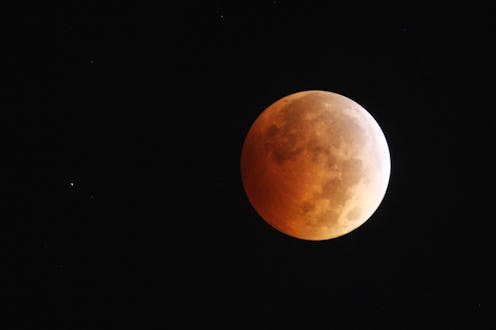News
Missed The Bood Moon? You'll Be Waiting A While
On Sunday night, skywatchers will be getting a rare treat, and one they definitely shouldn't miss — a so-called "blood moon" supermoon lunar eclipse. The total eclipse is scheduled to begin at 10:11 p.m. ET, to peak at 10:48 p.m. ET, and to pass at 11:23 p.m. ET — all eminently convenient times for any west coast observers, and still well within reason for anyone out east. And make no mistake, if you want to see one of these, it's really important that you make the time, because there won't be another one for a while. When will the next "blood" supermoon lunar eclipse happen, you ask? In the year 2033 — that's right, 18 years from now.
In other words, if you had a newborn child at the beginning of this year, that child would be a legal adult by the time you got to see another supermoon eclipse like this one. It's being referred to as a "blood moon" thanks to the reddish color it'll take on — as USA Today details, this is thanks to light scattering against the Earth's surface, illuminating the lunar surface in a haunting, dim hue. It figures to be one of the more impressive celestial sights on offer this year, and it's hyper-rare, so be sure you don't miss it!
Part of the reason this is such an elusive sight is that it's not just one natural phenomenon, but a convergence of a few of them. In addition to the red color that will cloak the moon, and the total lunar eclipse, the "supermoon" part means that it's also a full moon that's as close to Earth as its orbit will take it. In other words, it'll be the biggest, reddish, most eclipse-y moon you may have ever seen. According to Fox News, there hasn't been one of these since 1982, which means that if you're 33-years-old old younger, you've never been alive to see one.
So, if this sort of thing gets you excited, make sure to take a gander. If you're wondering how to check it out, and you live in the United States, the answer is easy — just look up! If you're in an area where the moon isn't visible during that time, however, whether due to your weather or your geographic location, you can also follow along online — the Slooh Community Observatory will also be livestreaming the event.
